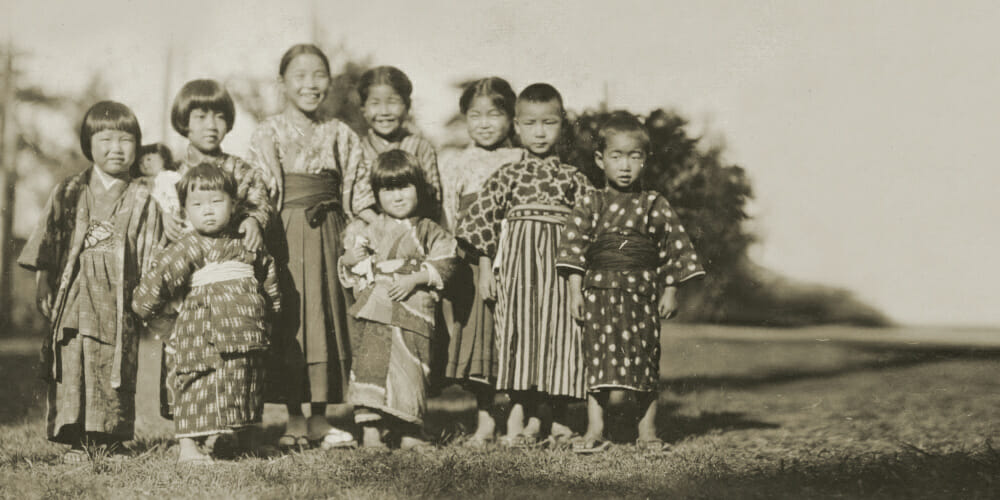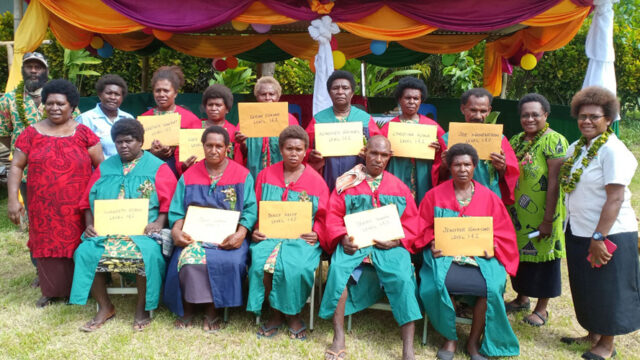The history of Adventist mission in Japan

The roots of Christianity in Japan can be traced back to the work of Jesuit missionaries in 1549. By the end of the sixteenth century an estimated 300,000 Christians lived in Japan. However, succeeding shogunates in the seventeenth century severely persecuted Christians, suspicious that new converts were being used to undermine traditional Japanese social order.
Within 30 years the indigenous Japanese church had been largely stamped out as believers were crucified and even thrown alive into volcanoes. Determined to prevent any contact with outside Christians, the government made it illegal for most foreigners even to set foot in Japan.
Christian Mission Reemerges
In the 1850s Western powers forced Japan to sign treaties and open its ports, and by 1855 Christian missionaries again worked in Japan. By 1888 more than 44,500 Japanese Roman Catholics, along with 25,500 Protestants, lived with members of other denominations. The following year the country had its first visit by a Seventh-day Adventist.
Abram La Rue, a self-supporting missionary, had made Hong Kong his base in May 1888. In 1889 he made a voyage to Japan, where he distributed literature. The next year the prominent Adventist leader, S. N. Haskell, an American, visited Japan and reported: “We baptized one man in Japan.” While probably an expatriate (perhaps one who had read LaRue’s literature), Haskell noted with interest, “We learned that the Sabbath question has been discussed among the Japanese.”1
The Japan Mission
The first missionary the Seventh-day Adventist Church formally dispatched to eastern Asia was William C. Grainger, called to serve in Japan from the presidency of Healdsburg College in California. He arrived in November 1896. The first local Adventist church was formed early in 1899, the same year Grainger started publishing monthly Owari no Fukuin (The Gospel for the Last Days), the first Adventist Japanese-language periodical.
Sadly, later that year Grainger became fatally ill; he died on October 31, 1899.
Adventist work progressed, however, with other missionaries and national workers stepping into Grainger’s shoes. The first Japanese medical institution, Kobe Sanitarium, was founded in 1903, and within 12 months the Japan Mission was formally organized. In 1914 the first workers’ training institute, Nihon Dendo Gakko (Japan School of Evangelism), was established.
By 1919 the Japan Mission became the Japan Union Mission, with 14 churches, 305 members, seven ordained ministers, and 38 other denominational workers. Until the 1930s the burden of Adventist work in Japan was largely borne by missionaries, but they were known for their close and harmonious cooperation with national workers.2
Nationalism and a World War
In the 1930s Japan’s government became increasingly totalitarian. Expecting war with Western powers, Japan’s leaders became deeply suspicious of “foreign” denominations. In 1939 the Religious Organizations Law sought to forcibly unify all Protestant bodies under government-appointed leaders. Along with the indigenous Holiness Church and Japan’s Anglican Church, the Japan Union Mission refused to join and was dissolved by the government.
Western missionaries were expelled soon after, and leadership of the church devolved onto indigenous leaders. During the war Adventists were singled out for particularly harsh treatment,3 with 42 national leaders imprisoned, four of whom died from mistreatment.
PostWar Christian Renaissance
The allied victory in World War II, and the occupation of Japan, administered a great shock to Japanese self-esteem, and for 20 years there was an openness to Christianity, unprecedented probably since the sixteenth century, seen (rightly or wrongly) as distinctively American. In 1945 the number of Christians in Japan was estimated at 200,000, but within 12 years that number grew to more than 352,000. Adventists, too, experienced growth: from 600 in 1946 to 3,900 in 1958.
Growth was aided by the church’s strong health focus and the positive impression created by church members who showed great consistency in refusing to use alcohol and tobacco. It was also assisted by considerable numbers of missionaries, for the impact of the war had made their services essential again. Their aim, however, was to help the Japanese church achieve maturity. This was realized in 1984, when the General Conference Executive Committee voted to reorganize Japan as a Union Conference, beginning January 1, 1985.4
Era of Plateauing Growth
In the 1970s, as the Japanese economy boomed and the economies of North America and Europe misfired, the idea that Japanese should look to Westerners for any kind of answers lost its power. Christian growth in the country stuttered and stalled.
In 1963 Japanese Christians numbered around 750,000 in a nation of 90 million. Just three years later, in 1966, they passed 1 million. But in 1985 they still numbered just a little more than 1 million. The equivalent Adventist figures were 5,500 in 1963, rising to 6,400 in 1966, and 11,600 in 1985. Adventism had grown during this period of stagnation for Japanese Christianity in general, but the wider trend caught up with Adventists. In 2003 the membership of the Japan Union Conference touched 15,000 for the first time; but 15 years on, it has only just passed 15,200.
The Future
There are no easy solutions. But there are grounds for encouragement. In May 2018 Japan was the site of a Total Member Involvement evangelistic initiative. There was never any question of baptizing tens of thousands, as in Rwanda in 2016. Rather, the desire was to mobilize Japanese church members and refocus them on outreach. Early signs indicate that this has been achieved.
For many years, moreover, Japanese Adventists have tithed very faithfully, while at the same time having one of the highest ratios of offerings to tithe anywhere. Church members in the Japan Union Conference are committed to their church.
Twelve decades after the creation of the Japan Mission, Seventh-day Adventists in Japan want their compatriots to hear the good news of a risen Savior. Four hundred years ago Christianity spread like wildfire in Japan. It can happen again, with God’s power and the total involvement of church members.
1 “Movements of Missionaries,” Review and Herald 67 (Aug. 26, 1890): 518.
2 Tadaomi, Shinmyo, “A History of the Seventh-day Adventist Church in Japan from 1896 to 1950” (M.A. thesis, Philippine Union College, 1972), p. 257.
3 A. Hamish Ion, “The Cross under an Imperial Sun,” in Mark R. Mullins (ed.), Handbook of Christianity in Japan (Leiden: Brill, 2003), p. 93.
4 General Conference Executive Committee Minutes, Aug. 23, 1984, Minutes 1984: pp. 269, 270.
David Trim, Ph.D., is director of Archives, Statistics, and Research at the Seventh-day Adventist Church world headquarters in Silver Spring, Maryland, United States.








